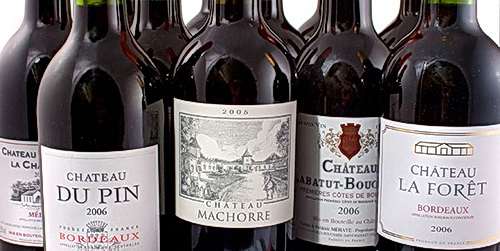Many of us select wine based on whether or not we are attracted to the label, but that label and the bottle are actually trying to tell us something about the product inside if you know what to look for. ExperiencePlus! is fortunate to have two sommeliers on staff (tour leader Bruno Ramain and Director of Tours John Giebler) so we asked them to help us learn how to interpret what the packaging tells us about the wine.
The Bottle:
- Look for a heavy bottle with colored glass which helps preserve and protect the contents. It also means that the producer was prepared for the bottle to age well. Some quality producers are working to lower the weight of the bottles they use to save on shipping costs and reduce environmental pollution.
- There should be a deep indentation in the bottom of the bottle (a punt) which allows space for sediment to settle.
- The seal – look for a metallic wrapper protecting the cork – it’s considerably more expensive than plastic and shows that the producer believes that the wine inside is worth the extra cost.
The Label:
- Will the wine be light or full bodied? The alcohol content will give you an idea of how much body the wine has. A few lighter white wines have alcohol levels around 6% to 8%, but most are now between 11.5% to 12.5%. Once you go over 13% you know that the wine is going to be more full bodied.
- Was the wine bottled on site? Again this goes to the care of the producer and it also increases quality because the grapes or bulk wine has traveled less. Look for something like “estate bottled” in the local language. In French it’s often ‘mis en bouteille au château’ or similar.
- What should you look for in the product description? “New World” wines (Australia, the Americas) publicize the grape more than the region. Look for a maker who describes the wine in a clear and simple way. If the description seems full of nonsense avoid the wine.
- What does the region tell you? This one takes a little knowledge of geography. Generally speaking, the smaller the region they refer to, the more interesting the wine will be. For example a wine from ‘France’ will be more generic than one from ‘Bordeaux’ which is more generic than one from a region in Bordeaux such as the ‘Medoc.’ One from ‘Margaux,’ a region in the Medoc, will be among the most interesting.
- Why does the region matter? The region can actually give you more information about how the wine will taste than the grape can, because climate is so important. Look for fuller-bodied wines from warmer regions like much of California, Southern Italy and France, and lighter-bodied wines from cooler regions such as Germany and Northern Italy and France.
- What about the age? An aged wine isn’t necessarily better and the vast majority (over 90% of reds and 95% of whites) of wines aren’t meant to age. In fact, after three years they’ve already lost a lot of their freshness and fruit flavors.
- What does the aging process do? Aging a wine that’s meant to age adds complex aromas and softens harshness.
- At what age is a bottle of wine considered young? Most wine is best enjoyed within a year of harvest and few will get better after that.
Go with cork, compressed cork, plastic, or screw tops? A solid, longer (2 inches) cork indicates that the maker intended that the wine be aged, or that they feel the wine is worth the extra expense. Otherwise there’s not much reason to use real cork for wines not meant to age. Though some wine connoisseurs may be dismissive of screw tops for certain wines they can be an excellent choice. There have been problems with plastic and synthetic corks letting oxygen into the wine in just a few months, but the technology is improving rapidly. Ideally you need something that breathes a tiny, controllable amount.
Want to learn more about wine? ExperiencePlus! invites you to join us on our Chile Wine Country (Plus! the Pacific Coast) tour where you’ll have the opportunity to visit three wineries and discover the joys of wine from the vine to the bottle. March is harvest season in Chile and you’ll save $200, per person, if you book that departure by August 31, 2014!


